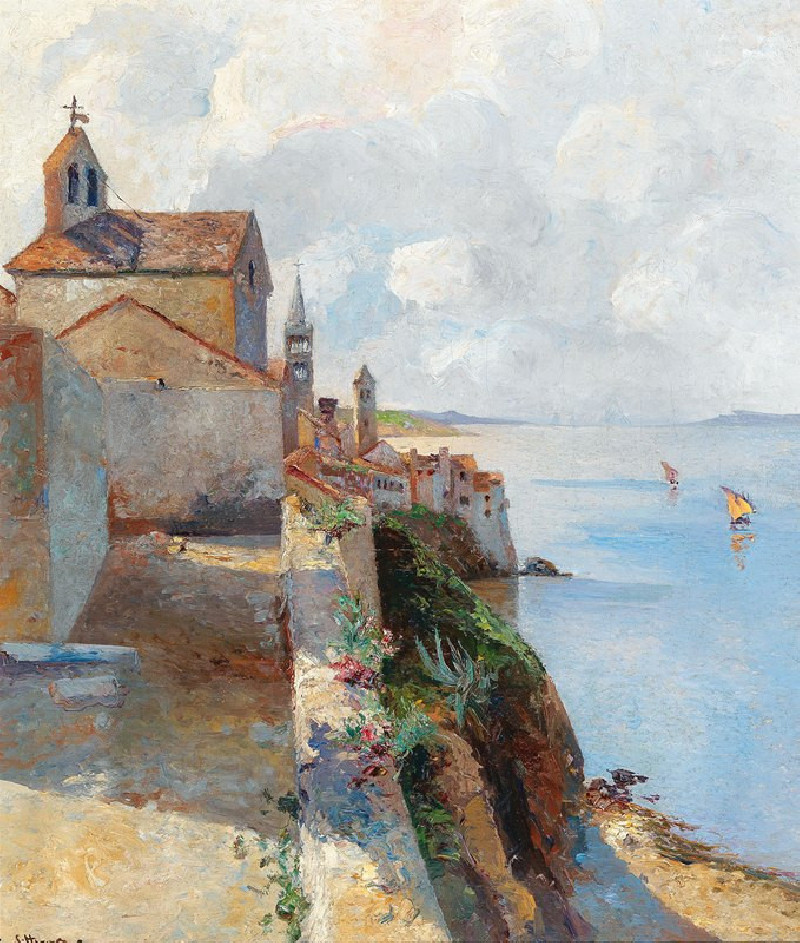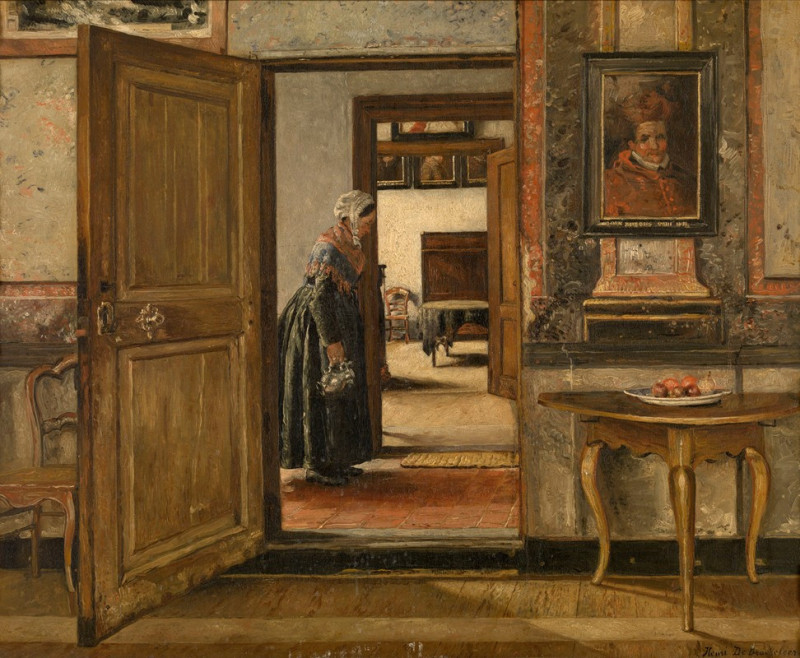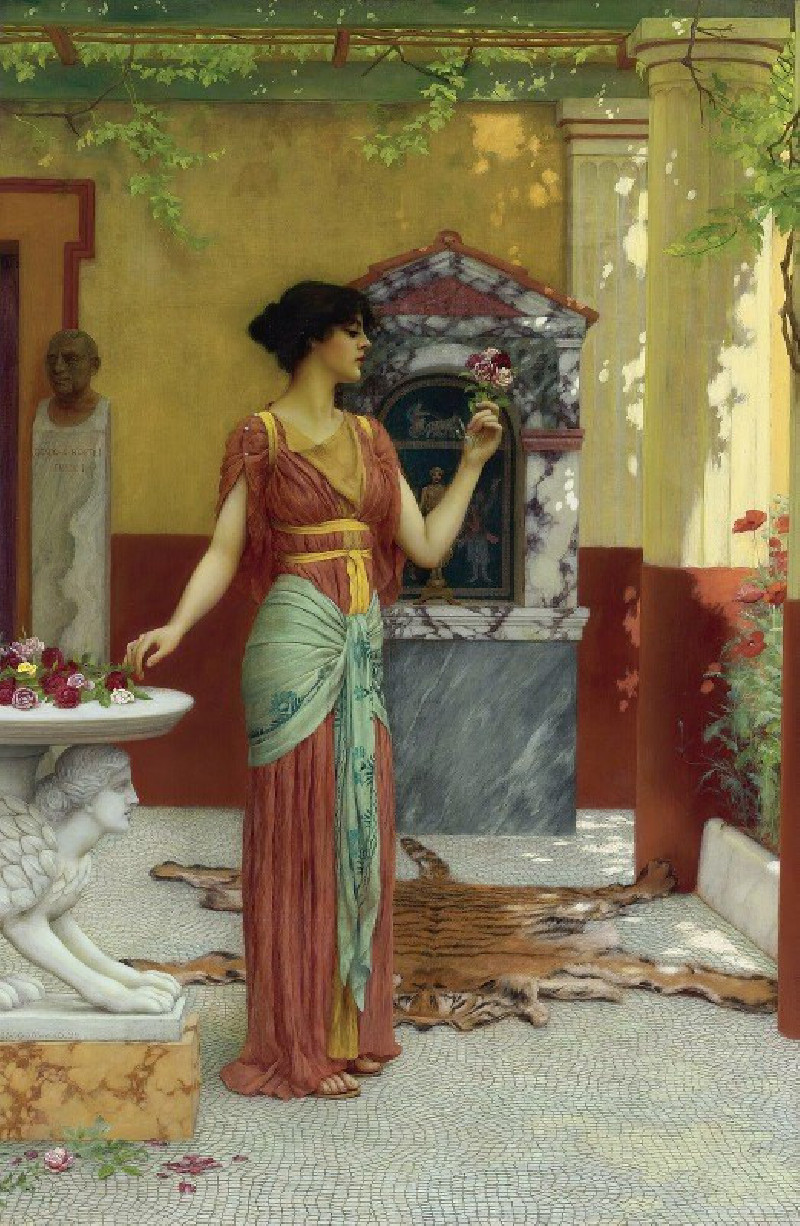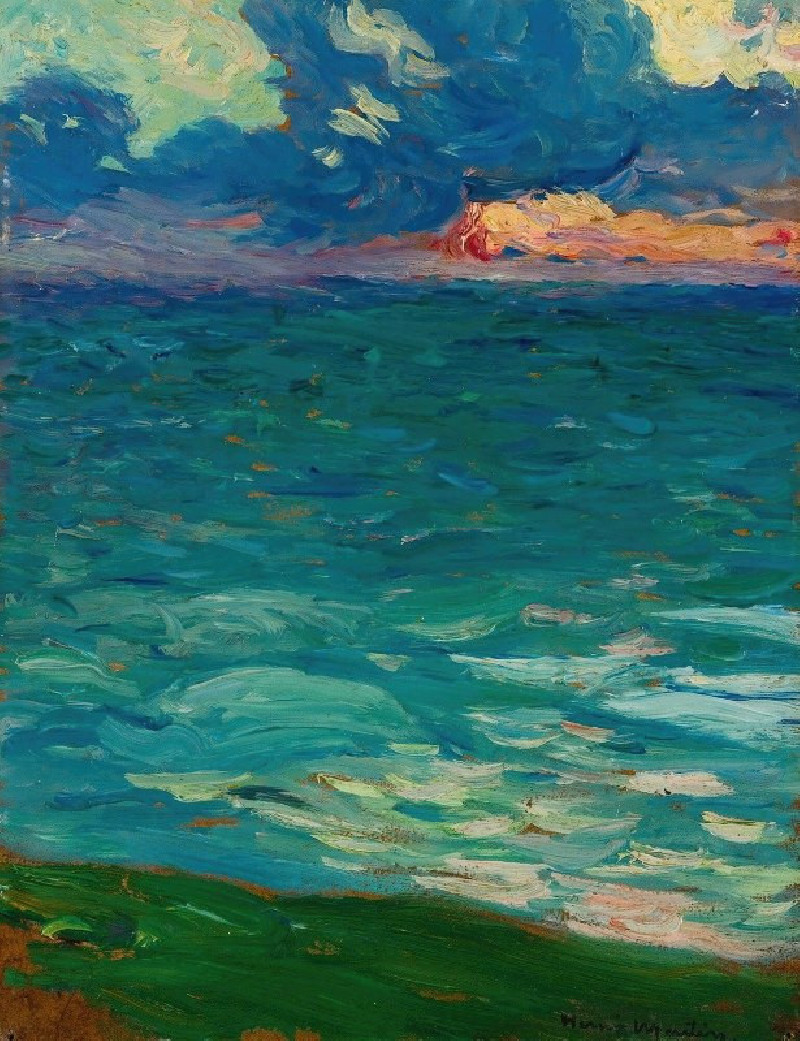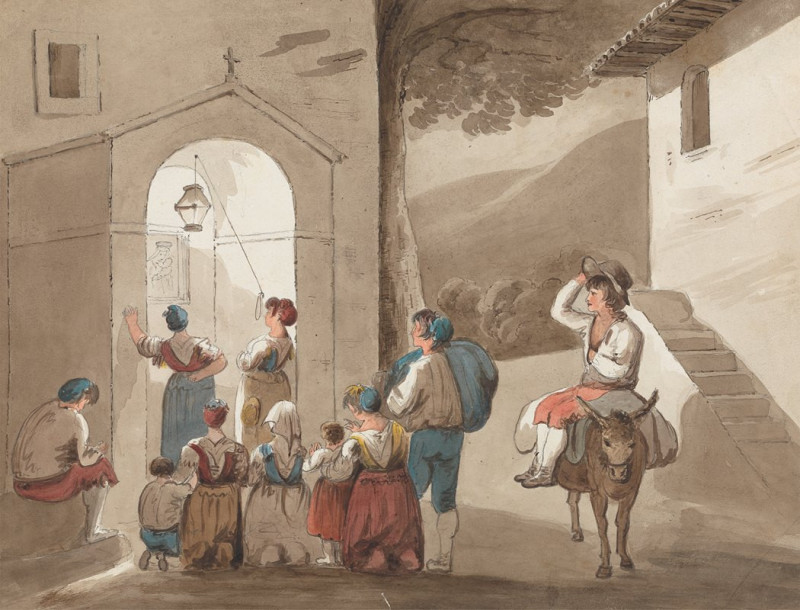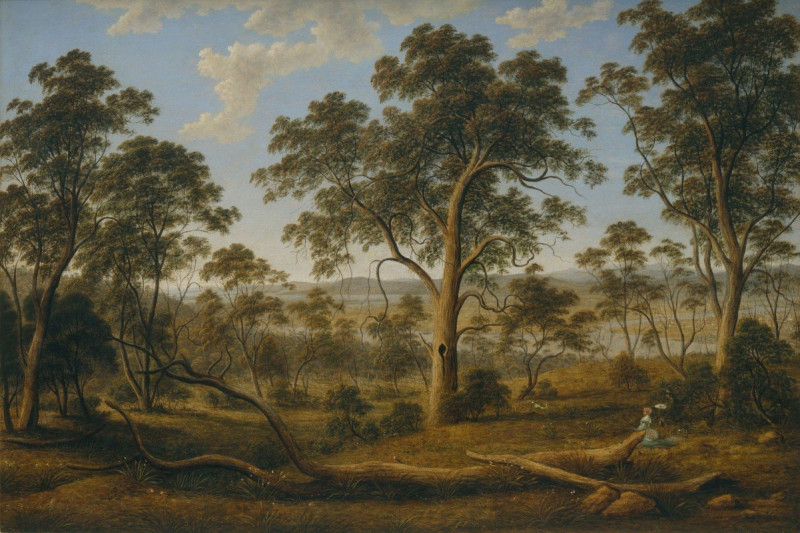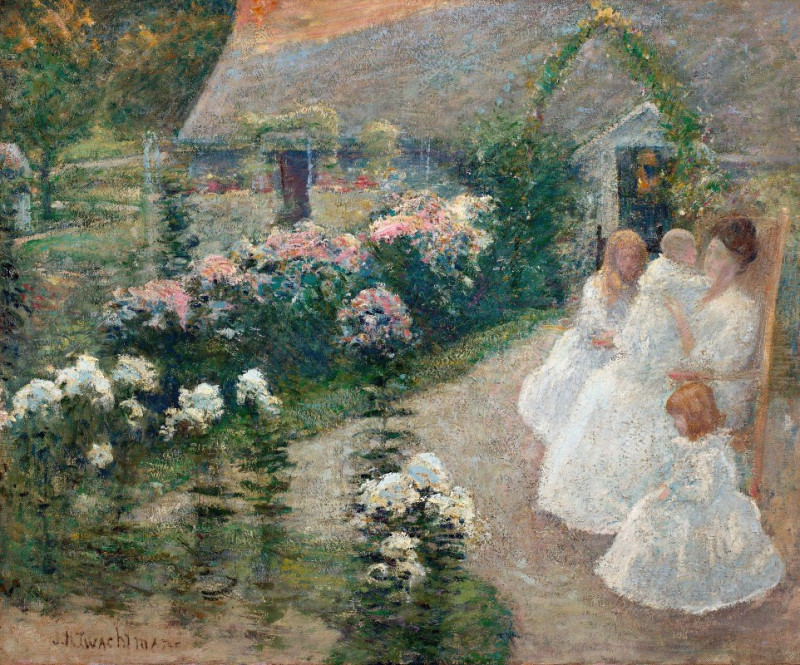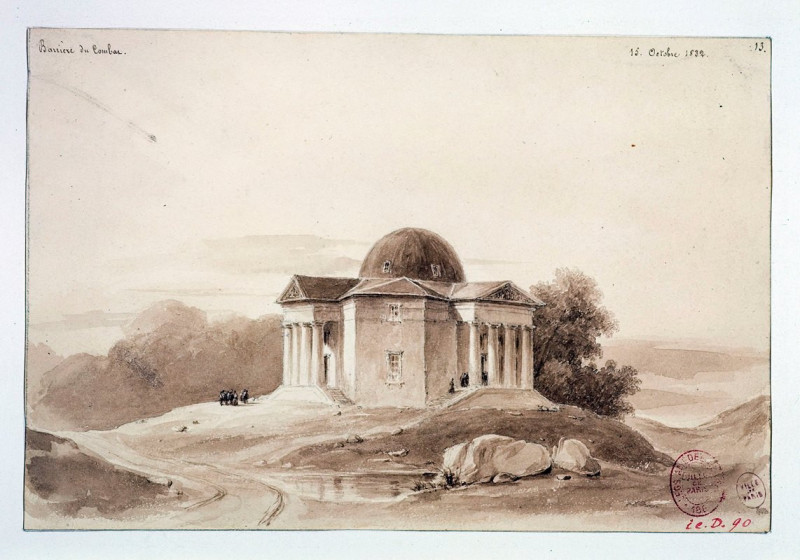Woman in the Bathtub (1936)
Technique: Giclée quality print
Recommended by our customers
More about this artwork
Ernst Ludwig Kirchner, a seminal figure in German Expressionism, created "Woman in the Bathtub" in 1936, merging vibrant forms and emotionally charged compositions that were characteristic of his work. This striking woodcut presents a bold visual narrative of a woman seated in a bathtub, enveloped by a complex interplay of sharp, angular lines and contrasting dark and light shades, reflecting Kirchner's distinctive style.The composition captures the woman in a moment of intimate solitude. Her body is portrayed with curvilinear forms that contrast starkly with the geometric patterns surrounding her, creating a dynamic tension and a sense of depth in the artwork. The angular lines, which can be seen as the tiles or decorative motifs in the bathroom, encapsulate the subject, intensifying the emotional impact of the scene.Kirchner's use of woodcut, a medium known for its bold lines and clarity, enhances the expressivity and emotional gravity of the scene. Through this artwork, Kirchner not only portrays a simple daily activity but also delves deep into the psychological state, possibly reflecting themes of isolation, contemplation, or vulnerability.
Delivery
Returns
Ernst Ludwig Kirchner (1880–1938) was one of the most important German Expressionist painters. He was a co-founder of Die Brücke, a group of German expressionist artists formed in Dresden in 1905. Die Brücke and Kirchner took inspiration from Vincent Van Gogh and Edvard Munch, as well as African and Oceanic art. They used woodblock printing as a medium to showcase their signature style: flat, unrealistic images with vivid colors. The recurring themes in Kirchner's artworks included exotic cultures, faraway landscapes, self-portraits, dancers and Berlin street life. His paintings and prints effectively portrayed non-European cultures despite the fact that he never traveled outside of Europe.

































